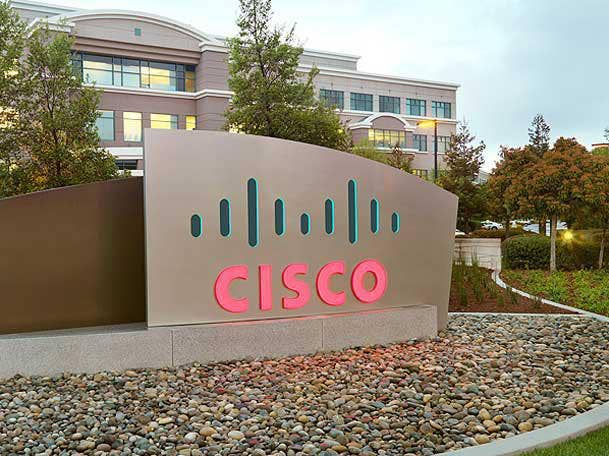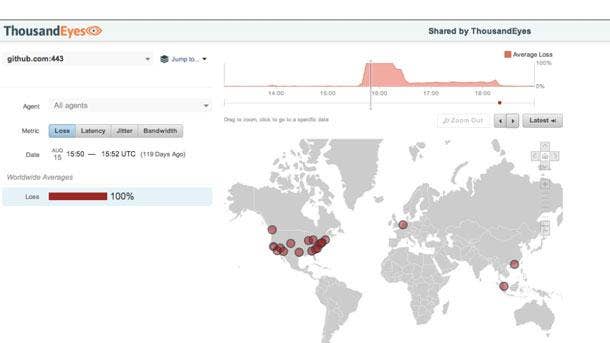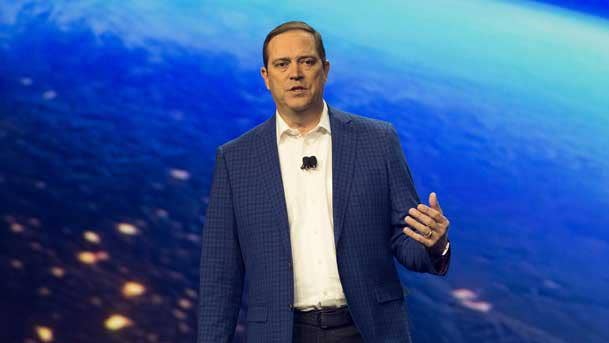The 10 Top Cisco News Stories Of 2020
In case the global pandemic and its far-reaching impacts didn’t keep Cisco busy enough this year, the tech giant also made a handful of acquisitions, shuffled around its executive leadership team and business units, and announced a $1B cost-cutting plan. Here are the ten biggest Cisco stories of 2020.

Cisco In The Spotlight
It’s safe to say that 2020 has thrown Cisco, as well as the tech industry as a whole, some unexpected curve balls. But even as the global COVID-19 pandemic cancelled the world’s biggest events and sent millions of employees to work from their homes, Cisco Systems didn’t sit still.
The San Jose, Calif.-based tech giant has been on a path to further its software and services business and shift away from hardware – a mission Cisco pushed even harder in the second half of 2020 when it announced it would shave $1 billion in costs from the company and introduced a plan to accelerate its research and development efforts to focus on delivering everything it can as a service. The large-scale restructuring had sweeping effects, including an executive leadership reshuffle, a voluntary retirement offer program that many longtime Cisco executives availed themselves of, and several rounds of layoffs.
Cisco has never been immune to macroeconomic issues, but 2020 served up a trade war between the U.S. and China that affected the tech sector and a pandemic that, at first, stifled IT spending around the globe. The vendor quickly stepped up to the plate with free collaboration and security tools, as well as a $2.5 billion business recovery program that extended financing to cash-strapped businesses that where been hit hard by the pandemic. Societal issues made their mark this year, too, and Cisco answered with a $5 million donation and commitment addressing systemic racism, xenophobia and inequality.
As if that wasn’t enough news, then came the acquisitions. Cisco this year purchased five companies and is in the process of closing three more deals, including its August BabbleLabs buy and pending Slido purchase in the collaboration space, as well as scooping up network monitoring company Thousandeyes and wireless IoT provider, Fluidmesh Networks.
Cisco didn’t take a breath in 2020. Here are the 10 biggest Cisco news stories of the year.

10. Cisco Gains New CFO
During Cisco’s fourth quarter 2020 fiscal earnings call in August, Robbins announced that Executive Vice President and CFO Kelly Kramer (pictured) would be retiring after the company identified her successor. Kramer was employed at Cisco for nine years and served as CFO for seven years.
In November, Robbins revealed that the company was tapping AutoDesk CFO R. Scott Herren as its new CFO, who joined the company on Dec. 18. Kramer helped choose and get her successor up to speed, she said during the tech giant’s fiscal Q1 2021 earnings call in November.

9. 500-plus Jobs Cuts In California
Cisco over the summer laid off more than 480 employees at both its San Jose and Milpitas offices in California. The company cut 397 jobs at its headquarters in San Jose and another 91 in Milpitas, which were effective July 31, according to WARN notices received by the state of California’s Employment Development Division in the summer.
The July job cuts spanned a variety of roles, including analysts, business operations managers, designers, engineers, product managers and technical leaders, according to the WARN notices. Managers across engineering, product marketing, software development and public policy were also affected.
Later in December, Cisco revealed it was letting go 101 employees from its San Jose campus via Worker Adjustment and Retraining Notification (WARN) notices received by the state of California’s Employment Development Division earlier this month.
According to the WARN notices at the time, the cuts included positions such as software engineers, product managers, program managers and data scientists. A director of product management and a director of software development were also included in the layoffs.
“Over the coming weeks and months, Cisco will increase our investments in key business areas that will drive customer satisfaction and partner profitability going forward and reduce investments in others. We will be restructuring parts of our business as a result,“ said a Cisco spokesperson to CRN in an email in December.
What’s happening in the US is abhorrent. It’s far overdue for all of us to take action to eradicate systemic racism, xenophobia, inequality & all forms of bigotry in America. How we respond will be an important moment in our nation’s history. @Cisco will lead. #blacklivesmatter
— Chuck Robbins (@ChuckRobbins) May 30, 2020
8. Cisco Donates $5M To Combat Racism, Inequality
Cisco postponed its first-ever virtual Cisco Live event in June the day before it was slated to begin amid worldwide outcry over the death of George Floyd and resulting protests. At the time, Robbins took to Twitter to voice his outrage for racism and inequality in the wake of the death of Floyd, and called systemic racism “abhorrent.”
“It’s far overdue for all of us to take action to eradicate systemic racism, xenophobia, inequality [and] all forms of bigotry in America. How we respond will be an important moment in our nation’s history,” Robbins said on Twitter.
Robbins also promised that Cisco would spearhead social justice efforts. To start, Cisco committed $5 million to several groups focused on social justice causes, including the Equal Justice Initiative, the Legal Defense Fund, Color Of Change and the company’s own fund for fighting racism and discrimination.

7. Early Retirement Offers Doled Out
Two months after Cisco announced a large-scale restructuring plan that would cut more than $1 billion in costs, the company issued early retirement offers to long-term executives across geographies.
A spokesperson for Cisco in October wouldn’t confirm the number of employees who received a voluntary retirement offer but said in an email to CRN that its employees are its priority. “We are committed to providing our full support to those transitioning to new roles or teams within Cisco or leaving the company. Where possible, we will offer employees options that enable them to make decisions that best suit their career goals and personal circumstances,” the Cisco spokesperson said.
The voluntary early retirement program will net estimated pretax charges of approximately $900 million, consisting of severance and other one-time termination benefits, among other costs. The company said at the time that it expected to gain $800 million with these changes in place in the first quarter of Cisco’s fiscal 2021, which ended in November. The remaining amount will be recognized during the rest of the 2021 fiscal year.

6. David Goeckeler Jumps to Western Digital; Cisco Gains New EVPs
David Goeckeler, executive vice president and general manager of Cisco’s networking and security business, announced in March that he was leaving the company to become CEO of Western Digital.
Goeckeler was a Cisco employee for seven years and one of the firm’s highest-paid executives who got his start as vice president of engineering within Cisco’s Security Business Group. He was promoted to his role leading Cisco’s networking and security units in 2017. Cisco at the same time named former Senior Vice President and General Manager of Cisco Meraki, Todd Nightingale, as Goeckler’s successor. Nightingale, who joined Cisco’s executive leadership team, is now heading Cisco’s $34 billion Enterprise Networking and Cloud Business.
Goeckeler wasn’t the only higher-up that left the company in 2020. The collaboration business changed hands when Cisco’s Executive Vice President and General Manager of the Collaboration business Amy Chang decided to take time off to spend time with her family, according to a Cisco spokesperson in March. In August, Cisco’s then newly-combined Security and Applications business group gained former Box executive Jeetu Patel as senior vice president and general manager. Patel reports directly to Cisco CEO Chuck Robbins.

5. Cisco Shuffles Leadership Team
Alongside Goeckeler’s departure and collaboration group changes, Cisco in March also announced a larger restructuring of its business lines.
19-year Cisco veteran Liz Centoni served as senior vice president and general manager of IoT for Cisco for nearly two years before she was tapped as the leader of the Cloud Strategy and Compute business unit that was formed in November. Four months later, she was called on to head up a brand-new business unit for Cisco, it’s Future Technologies and Incubation group.
Cisco also combined its silicon group together with its hardware platform and optics team. Leading the new group is Eyal Dagan, Cisco’s senior vice president of Core Hardware Platform, who, up until March, served as senior vice president of Cisco’s Core ASIC Group within the Common Hardware Group.
Lastly, Senior Vice President and General Manager of Cisco’s Service Provider Business Jonathan Davidson was raised to senior vice president and general manager of Cisco’s new Mass-Scale Infrastructure Group, which the firm said is focused on 5G opportunities, webscale and service provider customers, as well as very large enterprise customers.

4. Webex Usage Takes Off
If there is any silver lining to the COVID-19 pandemic, it’s that people all over the globe have adopted remote collaboration technology with gusto. One solution that emerged as a front-runner since March for business users was Cisco Webex, the tech giant’s videoconferencing platform.
Webex has continued to increase in popularity as a result of the pandemic. Cisco at the beginning of March expanded the capabilities in its free Webex offer in all countries where it is available, including unlimited usage or no time restrictions and support for up to 100 participants. Cisco also provided free 90-day licenses to businesses that were not Webex customers through its sales team and Cisco partners.
The tech giant in September told CRN that Cisco Webex has more than 500 million meeting participants and is logging “well over” 70 billion meeting minutes a quarter, which is a year-over-year usage increase of more than three times.
In its biggest collaboration announcement of the year, Cisco in December revealed more than 35 new Cisco Webex innovations aimed at boosting meeting productivity, regardless of the end users’ location. Cisco counts 95 percent of the world’s Fortune 500 businesses as collaboration customers today.

3. Cisco Buys ThousandEyes For A Reported $1B
Cisco made a handful of acquisitions this year, but perhaps none with as high a price tag as its purchase of San Francisco-based networking monitoring company ThousandEyes.
Cisco has been working to boost its software and services focus as it pivots away from hardware for the last several years. ThousandEyes is viewed as a complement Cisco application performance and monitoring business, AppDynamics. That’s because the acquisition combines Cisco’s strength in network and application performance and ThousandEyes visibility into the internet, according to Cisco.
While the two companies never disclosed financial terms of the deal, Bloomberg reported that Cisco paid nearly $1 billion for ThousandEyes. The acquisition was announced in May and closed in August.

2. Cisco Kicks Off $1 Billion Cost-Cutting Plan
In the wake of a global fiscal downturn as a result of the COVID-19 pandemic, Cisco Chairman and CEO Chuck Robbins announced in August that the company would be cutting $1 billion in costs to reduce its cost structure over the next several quarters.
Robbins said at the time that Cisco would “rebalance” its investments to focus on key areas that will position the company better for the future, including 5G, Wi-Fi 6, next-generation silicon and artificial intelligence.
In addition to making adjustments to its research and development investments, Cisco’s cost-cutting measures included a companywide restructuring involving both a voluntary early retirement program that was completed in October, as well as several rounds of layoffs across different geographies.

1. COVID-19 Speeds Up Cisco’s As-A-Service Transition
Like the $1 billion cost-cutting plan, Cisco in August also revealed it would be accelerating its research and development efforts to focus singularly on the goal of delivering everything it can as a service.
Robbins said during the company’s fourth fiscal quarter 2020 earnings call that the pandemic forced the company to “re-examine” its entire portfolio and that nothing is off the table—Cisco will plan to transition the majority of its portfolio to an as-a-service, consumption-based model.
The move builds on the “significant transformation” that Cisco has undergone as it shifts its focus to software, services and subscriptions, Robbins said at the time. Cisco is currently focusing on cloud security, cloud collaboration, SD-WAN and automation to drive simplicity and cost-effective network management, especially as more businesses rely on the cloud and a distributed IT architecture. The tech giant in November said it now has 78 percent of its total software revenue sold as subscriptions. Cisco’s fiscal first quarter 2021 earnings saw revenue declined for the fourth quarter in a row, falling 9 percent to $11.93 billion compared with $13.16 billion in the year-ago quarter.